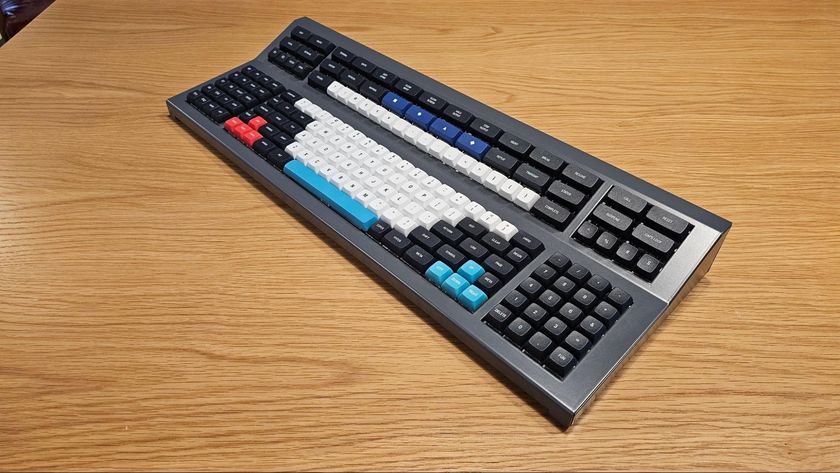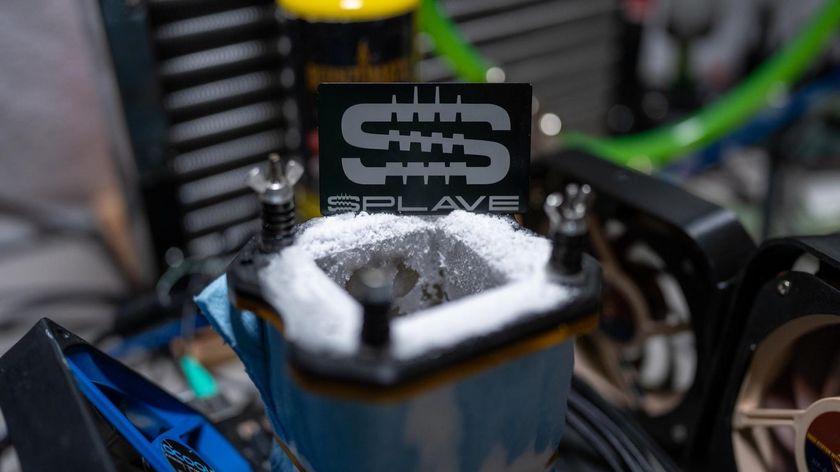GeForce 8800: Here Comes the DX10 Boom
More Details
The previous issues with Nvidia not being able to do AA with HDR are history. Each ROP supports frame buffer blending. This means that both FP16 and FP32 render targets can be used with multi-sample antialiasing. Under D3D10, eight Multiple Render Targets can be utilized in conjunction with new compression technologies to accelerate color and Z processing in the ROPs.
The GeForce 8800GTX can fill 64 textures per clock cycle, and at 575 MHz, it can serve up a maximum of 36.8 billion textures per second (GeForce 8800GTS = 32 billion/sec). The GeForce 8800GTX has 24 ROPs, and when running at a core frequency of 575 MHz, the card has a peak pixel throughput of 13.8 Gpixels/sec. Similarly, the GeForce880GTS version has 20 ROPs and therefore has a peak fill rate of 10 Gpixels/sec at 500 MHz.
| Nvidia GeForce Reference Specifications | ||||||
|---|---|---|---|---|---|---|
| Row 0 - Cell 0 | 8800GTX | 8800GTS | 7950GX2 | 7900GTX | 7800GTX 512 | 7800GTX |
| Process Technology (nm) | 90 | 90 | 90 | 90 | 110 | 110 |
| Processor Core | G80 | G80 | G71 | G71 | G70 | G70 |
| Number of Processors | 1 | 1 | 2 | 1 | 1 | 1 |
| Number of Transistors per Processor (Millions) | 681 | 681 | 278 | 278 | 302 | 302 |
| Vertex Frequency (MHz) | 1350 | 1200 | 500 | 700 | 550 | 470 |
| Core Frequency (MHz) | 575 | 500 | 500 | 650 | 550 | 430 |
| Memory Clock (MHz) | 900 | 600 | 600 | 800 | 850 | 600 |
| DDR Rate (MHz) | 1800 | 1200 | 1200 | 1600 | 1700 | 1200 |
| Vertex Shaders (#) | 128 | 96 | 16 | 8 | 8 | 8 |
| Pixel Shaders (#) | 128 | 96 | 48 | 24 | 24 | 24 |
| ROPs (#) | 24 | 20 | 32 | 16 | 16 | 16 |
| Memory Interface (bit) | 384 | 320 | 256 | 256 | 256 | 256 |
| Frame Buffer Size per Processor (MB) | 768 | 640 | 512 | 512 | 512 | 256 |
| Memory Bandwidth (GB/sec) per processor | 86.4 | 48 | 38.4 | 51.2 | 54.4 | 38.4 |
| Vertices/Second (Millions) | 10800 | 7200 | 2000 | 1400 | 1100 | 940 |
| Pixel Fill Rate (# ROPs x clk) in Billions/sec | 13.8 | 10 | 16 | 10.4 | 8.8 | 6.88 |
| Texture Fill Rate (# pixel pipes x clk) in Billions/sec | 36.8 | 32 | 24 | 15.6 | 13.2 | 10.32 |
| RAMDACs (MHz) | 400 | 400 | 400 | 400 | 400 | 400 |
| Bus Technology | PCI Express | PCI Express | PCI Express | PCI Express | PCI Express | PCI Express |
Check out the GeForce 8800GTX/GTS slide show.
If you were scratching your head at the memory bus width, here is your answer. From the core logic image on the previous page, you can see that six memory partitions exist on a GeForce 8800 GTX GPU. Each of these provides a 64-bit interface to memory, yielding a 384-bit combined interface width. The 768 MB of GDDR3 frame buffer memory is attached to a memory subsystem that utilizes a high-speed crossbar design, similar to GeForce 7x GPUs. This crossbar supports DDR1, DDR2, DDR3, GDDR3 and GDDR4 memory.
The GeForce 8800GTX uses GDDR3 memory, with a default clock speed of 900 MHz (GTS version is clocked at 800 MHz). With a 384-bit (48 byte-wide) memory interface running at 900 MHz (1800 MHz DDR data rate), frame buffer memory bandwidth is very high at 86.4 GB/sec. With 768 MB of frame buffer memory, far more complex models and textures can be supported at high resolutions and image quality settings.
Stay On the Cutting Edge: Get the Tom's Hardware Newsletter
Get Tom's Hardware's best news and in-depth reviews, straight to your inbox.












